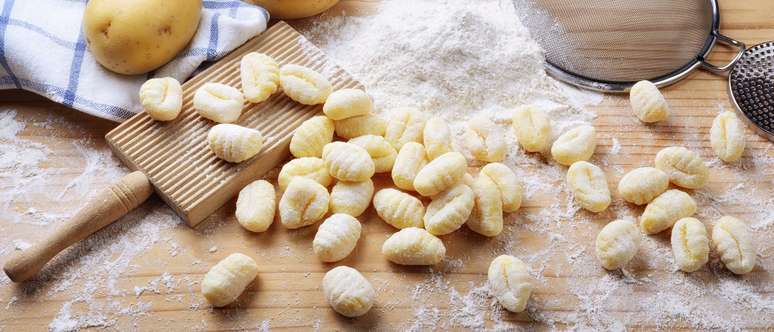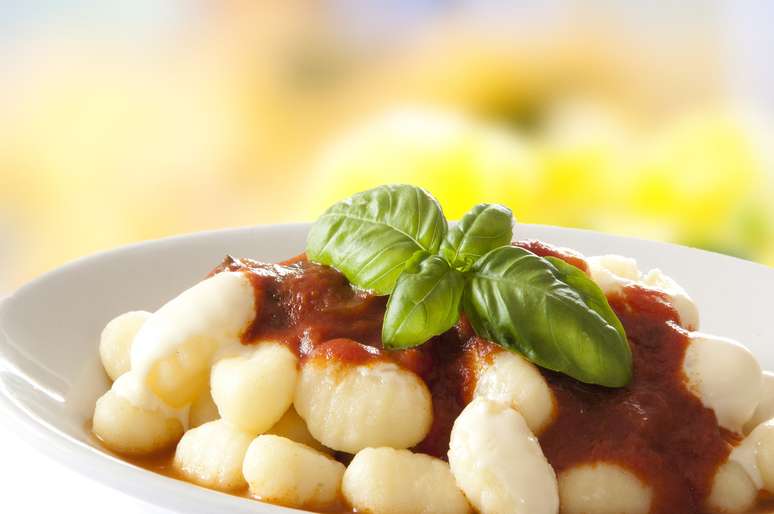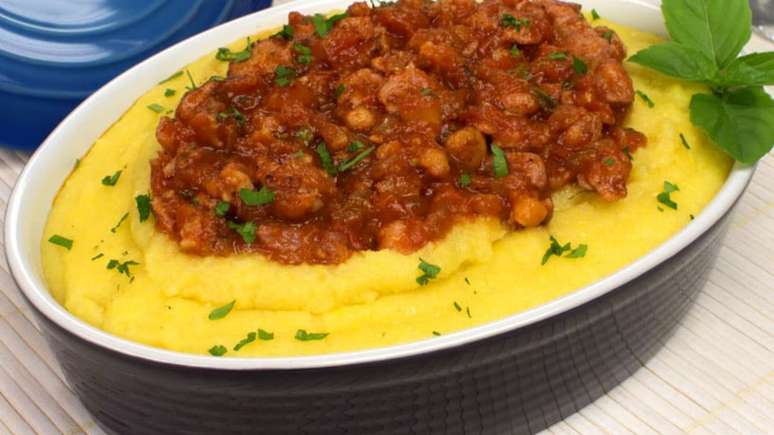Pasta maker Joyce Bergamasco reveals all the secrets for preparing gnocchi to never make a mistake with the recipe again
In general, making gnocchi is very simple, but sometimes even simple dishes raise questions. It is therefore worth knowing all the secrets for preparing a light pasta mixed with the sauce in the right quantity.
To avoid making further mistakes, we called pasta maker Joyce Bergamasco, who gave us all the advice – from the most to the least known – for preparing perfect gnocchi. Be sure to write down all the advice and, most importantly, apply it in practice.
Types of dumplings
What will your gnocchi be made of? I don’t know if you know, but you can use English and asterix potatoes, purple and orange sweet potatoes, as well as cassava, beetroot and plantain. What differs from each ingredient is the amount of water it contains, which requires different types of cooking.
Those with more moisture – English potatoes, Asterix potatoes, cassava, orange sweet potatoes and beets – should be baked, while the drier ones – Asterix potatoes and purple sweet potatoes – should be steamed. It is worth remembering that, even if the chosen ingredient has less water, it should not be prepared directly in water so as not to retain too much moisture and it should always be cooked with the peel so that it reaches the right point.
For this guide Pastaia chose the asterix potato, so the potato was baked in the peel. Only the shell tends to have burnt pieces, and that’s what happened.
cooking
If the potatoes are cooked in the oven, the ideal is to place a layer of coarse salt all over the pan and on top of the ingredient. Bergamasco explains the reason: «Coarse salt protects the direct contact of the ingredient with the pan, preventing it from drying out». Cook over low heat (180°C), without aluminum foil, for 1 hour – 1 hour and a half. Make sure the potato is well cooked when you remove it. “Cooking must be slow, because if we increase the oven temperature the potatoes will dry out and not cook completely,” explains the professional. Then wait for it to cool before kneading it.
During steam cooking it is important that the potato cools completely and remains at room temperature to lose all the cooking steam.
It’s time to knead
Sure, your first thought is to use a fork to knead the dough, but did you know there’s a way that makes your life easier? And for this you will need a large sieve. Mash the potato through a sieve. In this way the peel is completely freed, which remains in the sieve, while the potato remains very crushed and fine. Your arm and hands will thank you too.

Mix the ingredients
Make sure the potatoes are cold enough so that the egg doesn’t cook by mixing them in, and use only the yolk, as the egg white contains a lot of water and can soften the preparation. Also add the cheese, flour and seasonings of your choice.
It’s important to note that good gnocchi are light, so you don’t need a lot of flour. “To start, we add 15% flour to make the dough, and we can add more flour as the dough is rolled out on the counter, reaching the 30% margin,” says Joyce. The amount of cheese will also vary, as some are more mature than others and transfer more flavor. So 8% to 10% cheese is sufficient for the recipe.
To mix, use a spatula, this way the humidity and heat of your hand will not enter the gnocchi dough, preventing the potato from releasing too much starch and becoming soft. Take the flour from the bottom and pour it on top, mix, make folds, bringing the bottom parts upwards, mixing everything together, until the dough becomes more homogeneous and smooth, as if you were making breadcrumbs. There is no need to knead, just fold it so that the dough is uniform.
After everything is well mixed you can use your hands, without using too much force. Roll it up and turn it over. When you’re ready, you’ll be able to play from hand to hand effortlessly. The dough may also stick to your hands a little, but not too much.
It is now ready to be cooked, as this dough does not need to rest, it must be opened the same day and cannot be placed in the refrigerator, as it retains moisture and softens.
Roll up and cut
Flour the work surface well and cut the dough into thin rolls. Use the palm of your hand to dab the dough with flour so that it becomes smoother and more uniform, without fingerprints. Then cut the gnocchi, with a knife or cutter, into small 2cm square pieces. Use a continuous motion to cut, avoiding cutting the dough.
Now here’s a secret so that your pasta incorporates the sauce well. Once cut into squares, press the center of each piece, forming a deep ball in the center.
Cook or freeze
The ideal is to consume the gnocchi fresh immediately, but if you want to freeze them, Bergamasco recommends blanching them well. Cook the gnocchi in a large pan with plenty of boiling water. When the balls rise to the surface they will be ready. Once cooked, immediately place them in a bowl full of ice water to stop the cooking and keep the gnocchi intact.
Once ready, let it drain well and dry at room temperature for about 15 minutes or until dry. Add a drizzle of olive oil and gently mix the gnocchi, only moving the pan so that the oil mixes completely with all the balls.
This bleaching process preserves the structure of the dough so that it does not fall apart even when frozen. The shelf life of frozen dumplings is up to 40 days. And, when preparing it, you can leave it frozen or let it defrost, but it can no longer be cooked, the best solution is to put it directly in the sauce.
Recipes and finishes
Joyce Bergamasco says that gnocchi adapt to all types of finishes, so it’s up to the imagination, but she chose the in gravy sauce AND with butter and sage. Discover the recipes by clicking on the respective names.
Source: Terra
Ben Stock is a lifestyle journalist and author at Gossipify. He writes about topics such as health, wellness, travel, food and home decor. He provides practical advice and inspiration to improve well-being, keeps readers up to date with latest lifestyle news and trends, known for his engaging writing style, in-depth analysis and unique perspectives.








